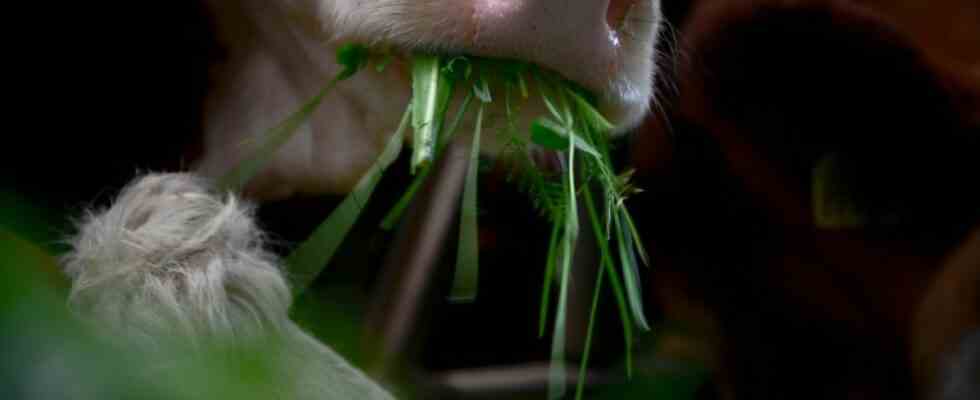A farmer and a researcher meet at a fair and there is a cow at the edge. The cow has a name, her name is Anni, and at 800 kilograms she is a real heavyweight. However, her box in Tierhalle 25 at the Berlin exhibition center is hardly bigger than herself, he wrote daily mirror back then. If she had been interested in the technical discussion between the farmer and the scientist and had wanted to turn around to hear what the two were whispering about, she would not have been able to.
Anni is something of a role model for the farmer Christoph Geil from the Butjadingen peninsula and Volker Heinz, head of the German Institute for Food Technology in Quakenbrück, both in Lower Saxony. Because she can do something that humans are not so good at: eating grass. Heinz and Geil now want to turn humans into grass eaters. “Two fools, one thought,” is how Heinz describes the idea that Geil and he had three years ago at the Green Week agricultural fair. With their idea, they not only want to change the way we eat, but also end global hunger and solve the climate crisis.
However, it’s not that easy: Like every cow, Anni has three stomachs ahead of us humans. She doesn’t have just one, moo – how ridiculous, but four of them. Anni is a ruminant. To understand how this works, here’s a quick technical guide: She bites the dust, grinds it between her teeth, sends the meal into stomach one, the rumen, where bacteria pounce on it and break it down. Then it goes from the rumen into stomach two, the reticulum, back into one, the two and back and forth and up into the mouth. Anni now chews again and sends the green porridge into stomach three. The omasum draws water from it, and the abomasum, stomach four, finally digests it, recovering fats and proteins before the intestines grab the remaining nutrients. Out the back comes, well, brown mush.
But wait, it’s not as if our ancestors didn’t try to eat grass. A very distant ancestor, so distant that hardly anyone knows him Paranthropus boisei his name was plant eater. He had wide molars for grinding greens. He died out. the homo sapiens also survived by inventing tools to kill animals and using fire to grill them. Survival of the Fittest. 1.5 million years later, people now have the knowledge and the technical possibilities to switch back. From meat eater to plant eater.
“For two years we did everything wrong”
Incidentally, the fact that grass is a valuable source of protein was not discovered at the Green Weekly Table. The British biochemist Norman Pirie discovered the richness of the “Leaf Protein” back in the 1960s. Geil and Heinz now look at how the cow extracts the protein from the grass. Geil’s farm is the leaf stomach: Here, machines extract the juice from the mown grass. Heinz’ institute is something like the abomasum: Here they extract leaf protein, called Rubisco, from the juice. A green-grey porridge comes out of the back – and this is used to form meatballs and sausages or cheese. The cheese tasted a bit strange, says Christoph Geil, but the meatball was tastier and the currywurst was great. “We’re still working on consistency and taste,” says Volker Heinz.
“We did everything wrong for two years,” says Heinz. But in 2023 they want to make great progress – and in about three years they want to bring meat substitutes onto the market with a manufacturer. The big advantage of the leaf protein compared to substitute products made from peas, oats, wheat, soybeans: It doesn’t need an expensive adhesive to hold it together, it sticks by itself.
In that sense, it could change the world now. Germany alone has 4.5 million hectares of green space, Heinz calculates, enough for the protein supply of half of Europe. And Heinz doesn’t just think continentally, but globally: “There are green plants everywhere, Rubisco is by far the most available protein in the world.” Nobody should go hungry anymore. And: The animal-torturing, water-wasting and climate-damaging meat market could be replaced. Because the pressed blades of grass can also be used for packaging, road surfaces and climate-friendly energy. Could this circular economy even have a negative carbon footprint? There is still a lot to do on Butjadingen, in Quakenbrück – and in the world.

